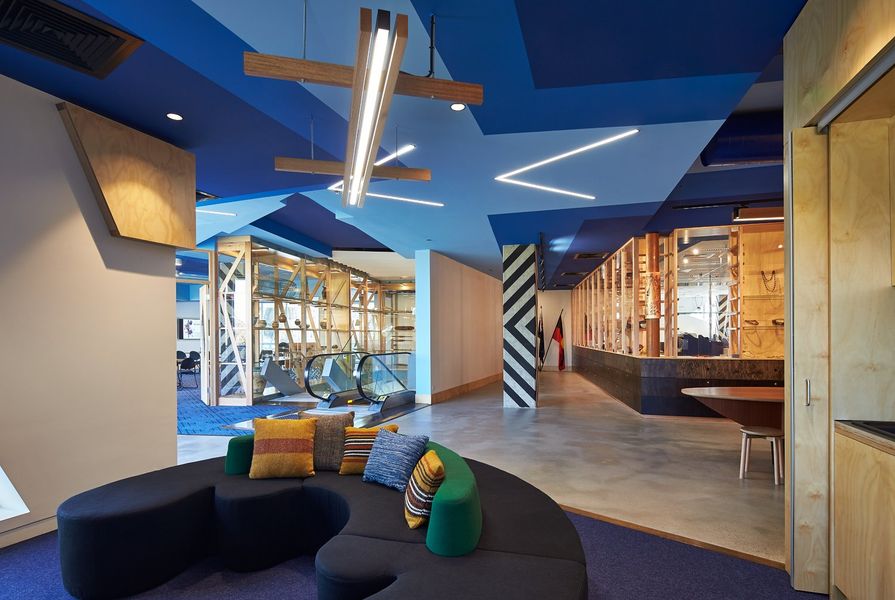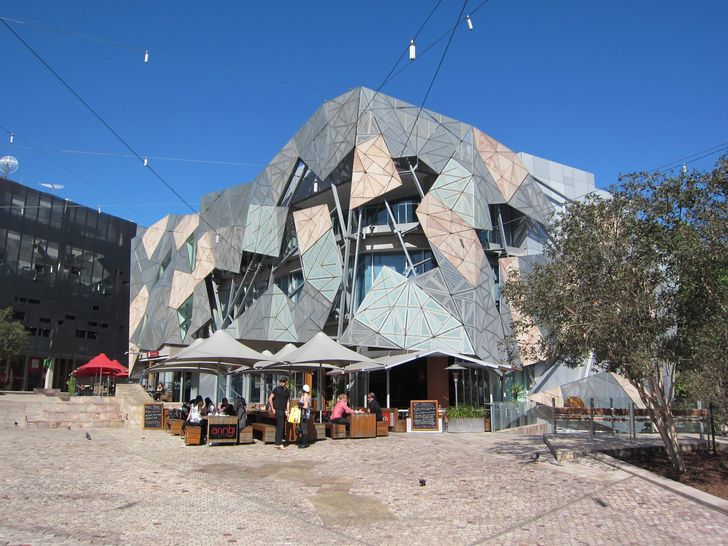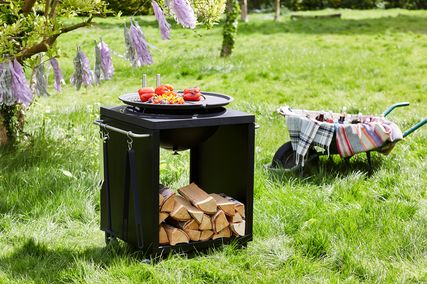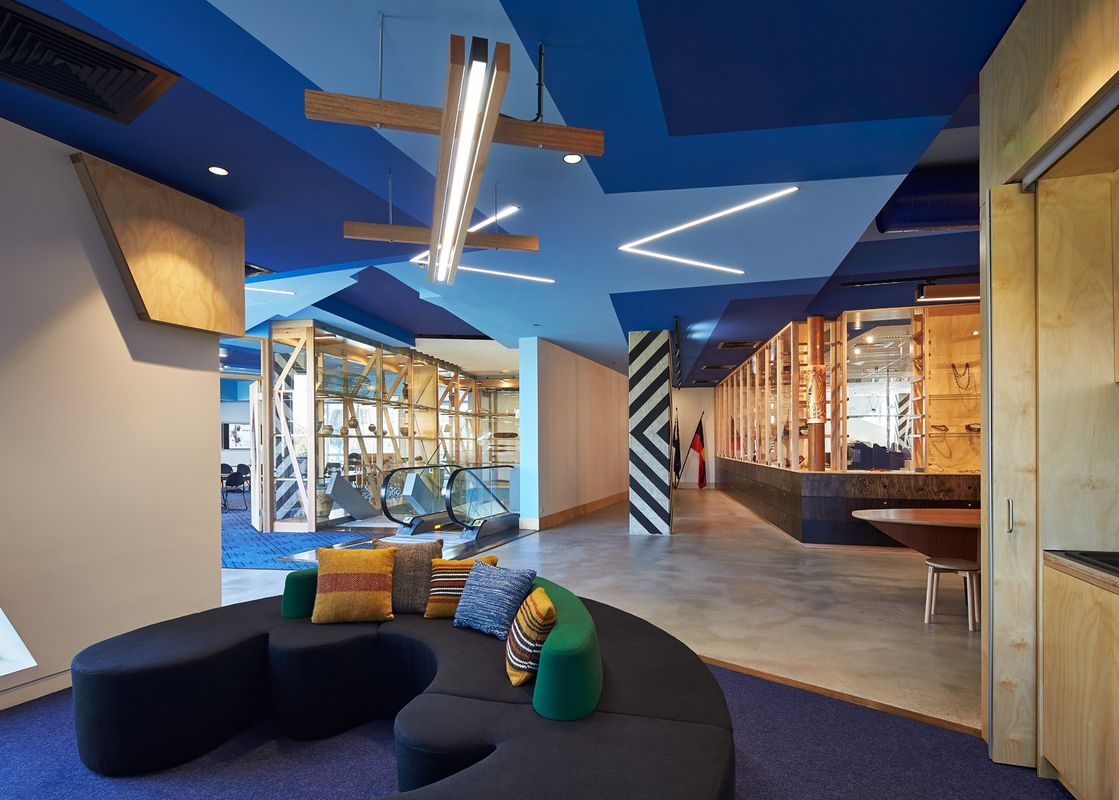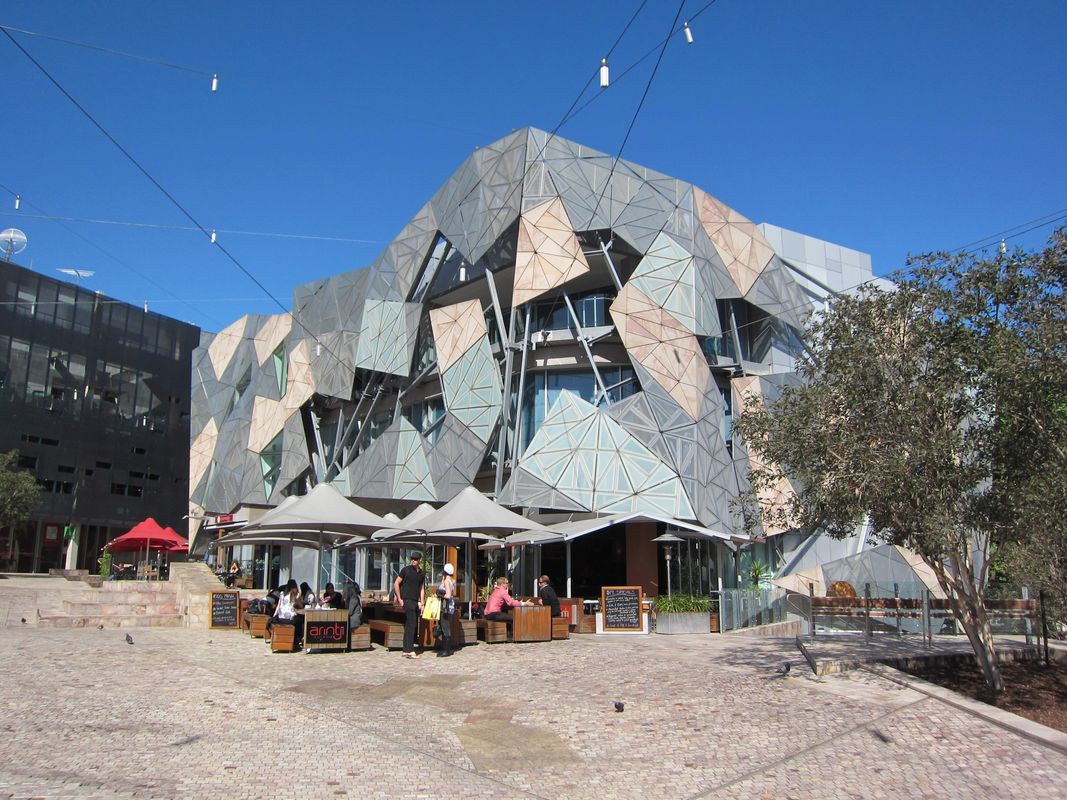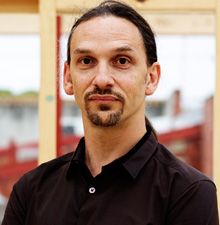
Jefa Greenaway.
Indigenous Architecture and Design Victoria (IADV) has followed with interest current developments around the pending demolition of the Yarra Building at Federation Square.
The resulting move of the Koorie Heritage Trust, Australia’s oldest community owned and run Aboriginal cultural centre, and the major tenant of the building, raises a series of important cultural considerations.
IADV, as a key contributor in the design of the Trust, along with Lyons Architecture, has a unique vantage point in which to consider the layers of history and meaning raised by this new commercially defined decision.
Federation Square has incrementally been embraced by Melburnians and tourists alike, however there was always a missing link within the cultural offerings of this key civic space. Until September 2015 there was little acknowledgement or visibility of Indigenous culture within the beating heart of Melbourne.
The relocation of a key Aboriginal cultural institution was both a literal and metaphorical shift from the fringes to the centre of one of Australia’s largest cities. While visitation to the Trust has grown exponentially over the past two years, many people are unaware of the underpinning design thinking that informed the transformation of the interior of the Yarra Building. In essence the key design narrative was to connect to the river, after which the building was named – Birrarung/the Yarra.
The Yarra Building at Federation Square designed by Lab Architecture Studio and Bates Smart.
Image: Flickr user Terrazzo
One of the key shortcomings of the building was its position in obscuring the connections to the river. This not only prevented key sightlines it also precluded the opportunity to have a conversation around the importance of the river over time, as well as the ability to embrace Indigenous stories that connect to place and showcase the cultural continuity of the Kulin Nation peoples who have made Melbourne home for millennia.
Indigenous people have demonstrated unique abilities of adaption and resilience, from before first contact to the present day. Aboriginal organizations like the Trust have shifted to numerous locations overs the years, but have always held firm in showcasing and celebrating culture regardless of where they were located. However, there is now a strong desire within Community to demonstrate a visible presence within our major cities.
The new location of Apple within the previous position of the Yarra Building provides the potential to not only better connect to the river, but also facilitates a unique opportunity for a large multinational like Apple to meaningfully engage with the Indigenous community in the spirit of reconciliation. This approach could prove transformative for all involved.
IADV has always advocated the importance of a process that embraces Indigenous cultural perspectives, sensibilities and knowledge systems. With this in mind, a collaboration between a global corporate citizen and the Indigenous community could very much amplify connections to Country in new and innovative ways. Designers seldom fully embrace Indigenous voices as part of a methodology that connects to deep history, while straddling contemporary representations and embodiment of Indigenous culture.
The issues are indeed gaining great currency within the public realm, including a recent event, title ‘Does Blak Design Matter?’ at the National Gallery of Victoria as part of 2017 Melbourne Design Week. This event teased out the complexities of such issues with a panel of established Indigenous built environment practitioners.
The new location of the Trust in the Alfred Deakin building offers a tangible opportunity to again explore these ideas by reflecting and strengthening Indigenous culture, while Apple also has a unique opportunity to demonstrate global leadership by celebrating First Nations culture within places of importance in which they become located.
Addendum
Following the announcement of the a proposed Apple flagship store at Federation Square the Koorie Heritage Trust issued the following statement on its relocation:
The Koorie Heritage Trust’s Board of Management has made the decision to capitalize on a rare opportunity to relocate the Trust to larger premises but remaining as a crucial element of Federation Square’s cultural and creative tenancy. The decision by the Trust’s Board was reached after much deliberation.
The Trust’s Board is of the view that the opportunity to relocate presents a unique opportunity as it provides:
- increased floor space enabling us to expand our services and program including catering for future growth of our unique and irreplaceable collections of Victorian Koorie art and artefacts while ensuring best practice in the maintenance and preservation for future generations
- a dedicated entrance with more visible directional signage in and around the Square
- an opportunity to update our spaces to reflect contemporary Victorian Aboriginal design and design aesthetics.

